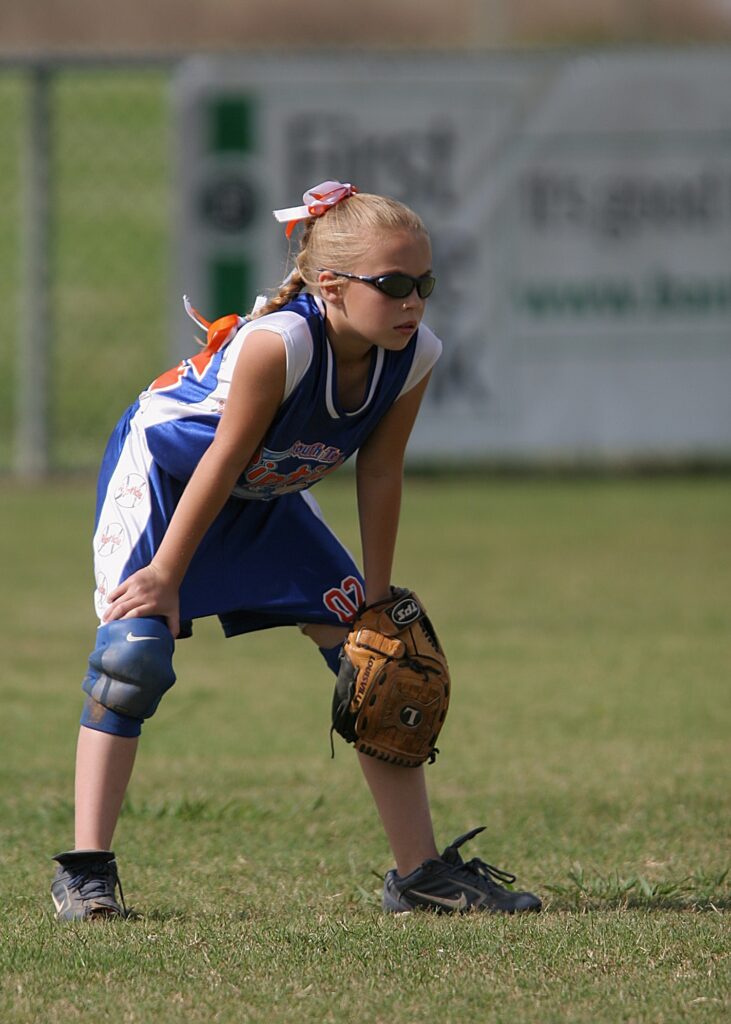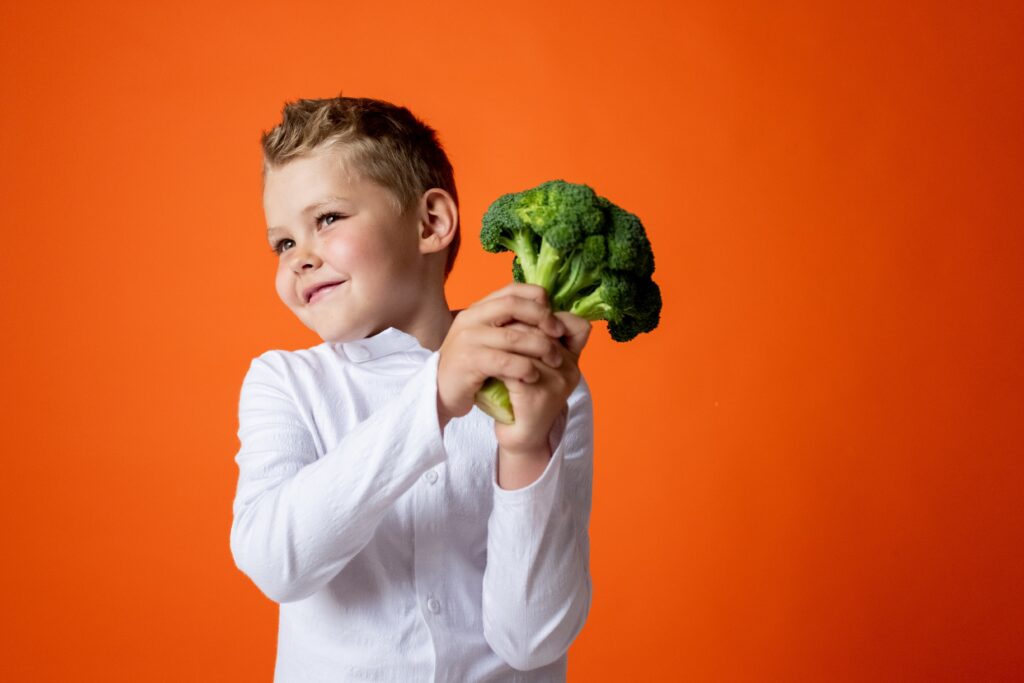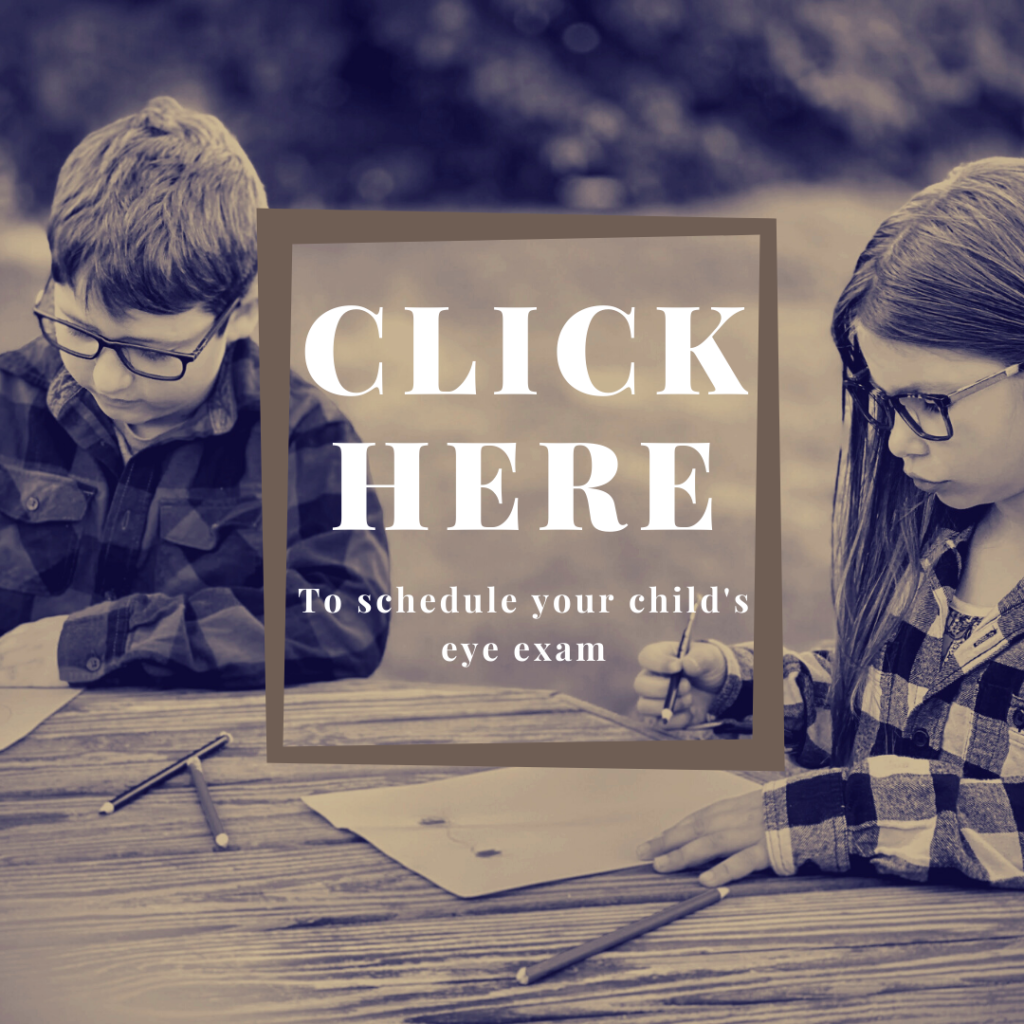5 Practical Tips to Ensure Your Child’s Eye Health and Safety
August is child eye care and safety month. Now that you know how to prepare your child for their eye exam and new eyewear, here are some practical ways to protect their future vision!
1. Guard against UV damage with sunglasses
Sunglasses are essential for the long-term health of the human eye. Yet children often wear sunglasses less frequently than adults, which is startling news since young eyes transmit 70 percent more UV light than adults, making them even MORE susceptible to UV damage! According to research, most UV damage occurs when we are young, so UV protection is crucial for young, developing children.
Protect the future of young eyesight with 100% UV-blocking sunglasses or photochromic eyeglasses.
*Bonus tip – While your child uses digital devices, be sure to use blue-light filters and have them wear blue-light blocking glasses to guard against UV damage from bright screens!
 2. Wear protective eyewear for sports
2. Wear protective eyewear for sports
Reportedly 31,000 eye-related sports injuries that require a visit to the ER occur every year. Consequently, it remains worth saying that sports eyewear is essential for young athletes. Regardless of the sport your child plays, talk to their eye doctor about prescription sports goggles. Your optician can fit your child for sports eyewear which they can wear while participating in their favorite sports activities!
3. Keep your house safe with age-appropriate toys and properly stored cleaning supplies
When purchasing toys for children, be sure they are age-appropriate and lack parts that children can poke into their eyes. Make sure to look for the “ASTM” stamp, which ensures that the toy meets all the national safety standards. Finally, be mindful to teach proper care and safety when children play with more dangerous toys like BB guns, bows & arrows, or dart guns.
To secure a safe home environment, make sure to keep cleaning supplies and other dangerous household items out of reach for young children. Many of these products can cause permanent vision loss amidst many other problems. Setting locks on cupboards or placing harmful supplies out of reach are simple ways to safeguard against permanent eye damage.
4. Establish an eye-healthy diet
Eating well is vital for everyone, but feeding your child a vitamin-rich diet can offer them long-term eye health benefits. You can find numerous nutrients that encourage eye health in familiar, yummy foods. Foods like sweet potatoes, carrots, sweet peppers, kale, eggs, nuts, and berries are all rich in nutrients which will protect developing eyesight for years to come! It can be challenging to encourage your little ones to try certain foods, but many of these nutrient-rich foods are available in kid-friendly smoothies, yogurts, and fruit pouches, so give them a try!
Teaching your child to eat well now will add to their future eye health and fight against age-related eye diseases.
5. Schedule regular eye exams
Did you know that 60 percent of children with learning difficulties have an undiagnosed vision problem? Routine eye exams are critical for children because their eyes are the key to their overall development. Prioritize annual eye appointments and learn to recognize the signs that your child is struggling with their vision.
These signs include:
- Squinting often, especially to see something far away like the TV or board in class.
- Eye rubbing while reading or attempting to concentrate.
- Wandering eyes (or an eye-turn, this can indicate strabismus or amblyopia)
- Eye discomfort after using digital devices (TV, tablet, etc.)
- Habitually using their finger to guide their eyes while they read.
Children have their entire lives ahead of them. It’s vital to take every step you can to make sure their vision is clear for life.
Sunglasses, protective eyewear, a healthy diet, household safety, and regular eye exams are simple ways to help guard your child’s eyes for years to come!


